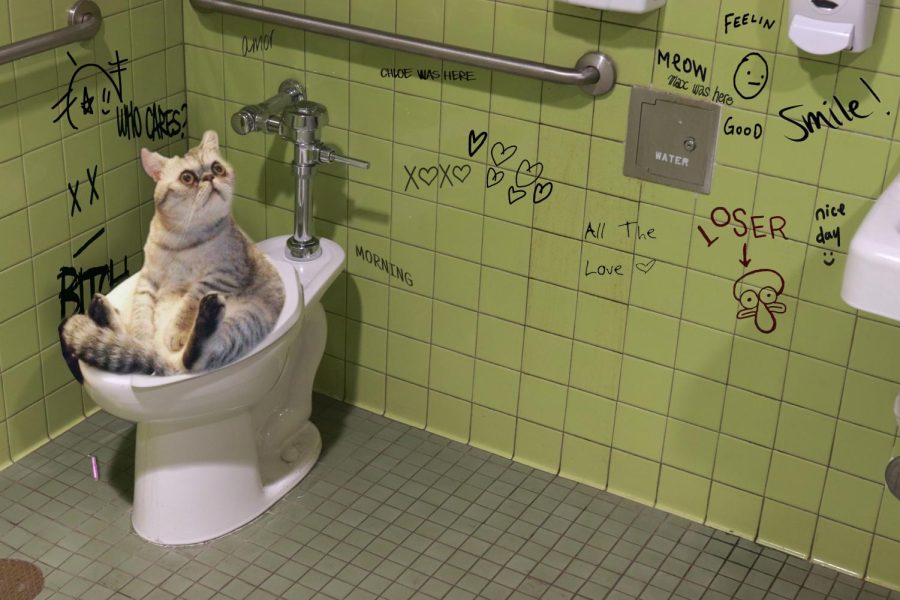Reasons Flushing Cat Poop Down Your Toilet Is Harmful - Suggestions for Proper Disposal
Reasons Flushing Cat Poop Down Your Toilet Is Harmful - Suggestions for Proper Disposal
Blog Article
Just about every person will have their own conception in relation to Don’t flush cat feces down the toilet.

Intro
As cat proprietors, it's important to be mindful of just how we throw away our feline pals' waste. While it may appear convenient to purge pet cat poop down the bathroom, this practice can have damaging consequences for both the setting and human health and wellness.
Alternatives to Flushing
Fortunately, there are more secure and much more liable methods to dispose of pet cat poop. Think about the following choices:
1. Scoop and Dispose in Trash
One of the most common approach of getting rid of pet cat poop is to scoop it right into a biodegradable bag and toss it in the trash. Make sure to make use of a dedicated clutter scoop and throw away the waste quickly.
2. Usage Biodegradable Litter
Opt for eco-friendly cat trash made from products such as corn or wheat. These litters are environmentally friendly and can be securely disposed of in the garbage.
3. Hide in the Yard
If you have a yard, consider hiding pet cat waste in a marked location away from veggie yards and water sources. Be sure to dig deep sufficient to prevent contamination of groundwater.
4. Mount a Pet Waste Disposal System
Purchase an animal waste disposal system particularly developed for feline waste. These systems make use of enzymes to break down the waste, reducing odor and ecological influence.
Health Risks
In addition to ecological problems, flushing cat waste can likewise present health dangers to people. Pet cat feces might contain Toxoplasma gondii, a parasite that can trigger toxoplasmosis-- a possibly extreme ailment, particularly for pregnant ladies and people with damaged body immune systems.
Environmental Impact
Flushing cat poop introduces damaging microorganisms and bloodsuckers right into the water, posing a significant danger to water environments. These impurities can adversely influence aquatic life and concession water top quality.
Verdict
Liable pet dog possession expands past providing food and shelter-- it additionally entails correct waste monitoring. By avoiding purging feline poop down the bathroom and selecting alternate disposal techniques, we can minimize our ecological impact and shield human wellness.
Why Can’t I Flush Cat Poop?
It Spreads a Parasite
Cats are frequently infected with a parasite called toxoplasma gondii. The parasite causes an infection called toxoplasmosis. It is usually harmless to cats. The parasite only uses cat poop as a host for its eggs. Otherwise, the cat’s immune system usually keeps the infection at low enough levels to maintain its own health. But it does not stop the develop of eggs. These eggs are tiny and surprisingly tough. They may survive for a year before they begin to grow. But that’s the problem.
Our wastewater system is not designed to deal with toxoplasmosis eggs. Instead, most eggs will flush from your toilet into sewers and wastewater management plants. After the sewage is treated for many other harmful things in it, it is typically released into local rivers, lakes, or oceans. Here, the toxoplasmosis eggs can find new hosts, including starfish, crabs, otters, and many other wildlife. For many, this is a significant risk to their health. Toxoplasmosis can also end up infecting water sources that are important for agriculture, which means our deer, pigs, and sheep can get infected too.
Is There Risk to Humans?
There can be a risk to human life from flushing cat poop down the toilet. If you do so, the parasites from your cat’s poop can end up in shellfish, game animals, or livestock. If this meat is then served raw or undercooked, the people who eat it can get sick.
In fact, according to the CDC, 40 million people in the United States are infected with toxoplasma gondii. They get it from exposure to infected seafood, or from some kind of cat poop contamination, like drinking from a stream that is contaminated or touching anything that has come into contact with cat poop. That includes just cleaning a cat litter box.
Most people who get infected with these parasites will not develop any symptoms. However, for pregnant women or for those with compromised immune systems, the parasite can cause severe health problems.
How to Handle Cat Poop
The best way to handle cat poop is actually to clean the box more often. The eggs that the parasite sheds will not become active until one to five days after the cat poops. That means that if you clean daily, you’re much less likely to come into direct contact with infectious eggs.
That said, always dispose of cat poop in the garbage and not down the toilet. Wash your hands before and after you clean the litter box, and bring the bag of poop right outside to your garbage bins.
https://trenchlesssolutionsusa.com/why-cant-i-flush-cat-poop/

As a devoted person who reads about How to Dispose of Cat Poop and Litter Without Plastic Bags, I think sharing that excerpt was a good thing. Sharing is nice. You never know, you may be doing someone a favor. Thanks so much for taking the time to read it.
Call Today Report this page